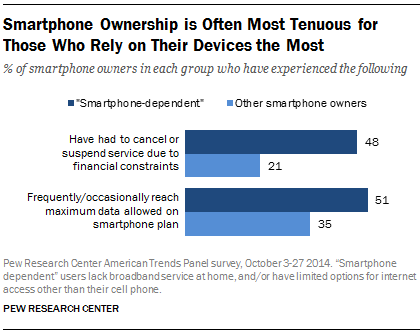It’s becoming a cliche, or a marketing buzzword. But seeing it happening to others doesn’t make it less true or cliche. Designing for mobile first is now a best practice. And thinking first about mobile marketing is next.
Here’s why:
Mobile browser usage has risen significantly. This has forced design to start on mobile where as in the early 2000’s it began on the desktop.
Graphic ads have changed due to less pixels available on mobile screens. With printing now being more automated and users doing it themselves at home this has caused a shift to disregard a certain standard of quality over efficiency or because it’s just cheaper.
With continuing changes you have only one option, Adapt or Die.
The rise of mobile marketing and web
If you’re always designing, marketing and thinking your audience is somewhere at home in a den or on their couch with a laptop or desktop machine, think again. The thought of “going online” invoking the image of someone booting up a desktop machine are long gone.
Users that are savvy online shoppers and researchers have their phones at the ready. Moreover, studies show every has their smartphone at arms length. (now that you’ve read that you’re looking at yours are you?) No one says, “Let me find a wi-fi signal and plugin my laptop and… “ No! They go for their phone to check that online menu, IMDb page or connect with friends.
As screen sizes get smaller, your designs, apps, and overall message needs to get more succinct. Users are not micro-thinkers, they’re macro. The thought is usually “I want it fast, clear and now”. Reaching a mobile audience must move past buzzwords and pretty graphics, it has to engage and catch the eye immediately.
Mobile Phone Use in 2015
http://www.pewinternet.org/2015/04/01/us-smartphone-use-in-2015/
Going online is now pulling your iPhone from your pocket, not sitting in an internet cafe (I just saw this in a movie) and looking up something. The benefits of a large screen, mouse and comfortable keyboard have been traded for a less cumbersome mobile friendly screen and touch ready keyboard. Or for the more savvy, just asking via Siri or whatever Google calls theirs these days.
According to pew research in 2015, 19% of Americans rely on some sort of smartphone for accessing online services. Overall in 2015 it was estimated that two-thirds of Americans were using smartphones over desktop devices. The reason came down to internet access and the ability to afford broadband services. But that’s for another blog and article. In fact 7% own a smartphone, but aren’t subscribed to internet services at home.
Some other fun numbers
Smartphones are used for much more than calling, texting, or basic internet browsing. Users are turning to these mobile devices as they navigate a wide range of life events:
- 62% of smartphone owners have used their phone in the past year to look up information about a health condition.
- 57% have used their phone to do online banking.
- 44% have used their phone to look up real estate listings or other information about a place to live.
- 43% to look up information about a job.
- 40% to look up government services or information.
- 30% to take a class or get educational content.
- 18% to submit a job application.
- 15% of people 18-29 heavily depend on their smartphone
- 13% of Americans making less than 30k per year are smartphone-dependent
So there are the numbers. With this in mind, where are you focusing your efforts for advertising, job recruitment, and attracting new customers? Are you looking at mobile?
IP Targeting and the rise of Geo Fencing.
Mobile ads are not just something appear on websites anymore. Now they appear on apps on mobile devices. In order to get those ads on mobile devices you either have to have an agreement with whoever hosts the app, use IP targeting, or Geofencing. These technologies allow you to place ads strategically on a person’s mobile device depending upon their location or the Internet Wi-Fi they are on.
We’ve got a few case studies you can take a look at to see how these worked out for clients we’ve done this for already. And before you say well you’re just reselling El Toro the answer is yes! Umm, but not quite.
You can think of it this way there are is a way to use the technology out of the box that makes sense for every body and reaches the audience and is effective and get you your ROI you’re looking for. Then there’s the way we do it.
At Element 502 we’re not going to spell it out here but taking IP Targeting technology and combining it with other technologies allow us to really amplify the effectiveness of IP targeting. We also use Geofencing which is a separate technology.



